|
Item |
Description |
Image |
|
| 3. |
GBA1000 Motherboard rev 4
This is an A3000-spec replacement motherboard with a couple of enhancements that fits into an A1000
case and was designed by G.Braun (circa ~2006). The Osh Park web site does not render the board pics properly so my guess is this board is too
complex for them to produce correctly. To give you an idea just how complex this is, look at the multiple pics showing the various gerber
files. It is probably best to get them made in China in quantities >50 with a bulk collaboration of many people to get the price down to
2-figures, otherwise you're looking at 4-figures to make 1 ;-)
It's pretty nice but really it isn't as good as an A1200 with a 68030 accelerator but I built this just for fun. I didn't bother to populate
the serial port since it's non-standard on the A1000 (the GBA1000 designer didn't correct that error, urgghh!) and nowadays no one is using
a serial port for anything.
Build Level: PCB Pick'n'Place Machine |
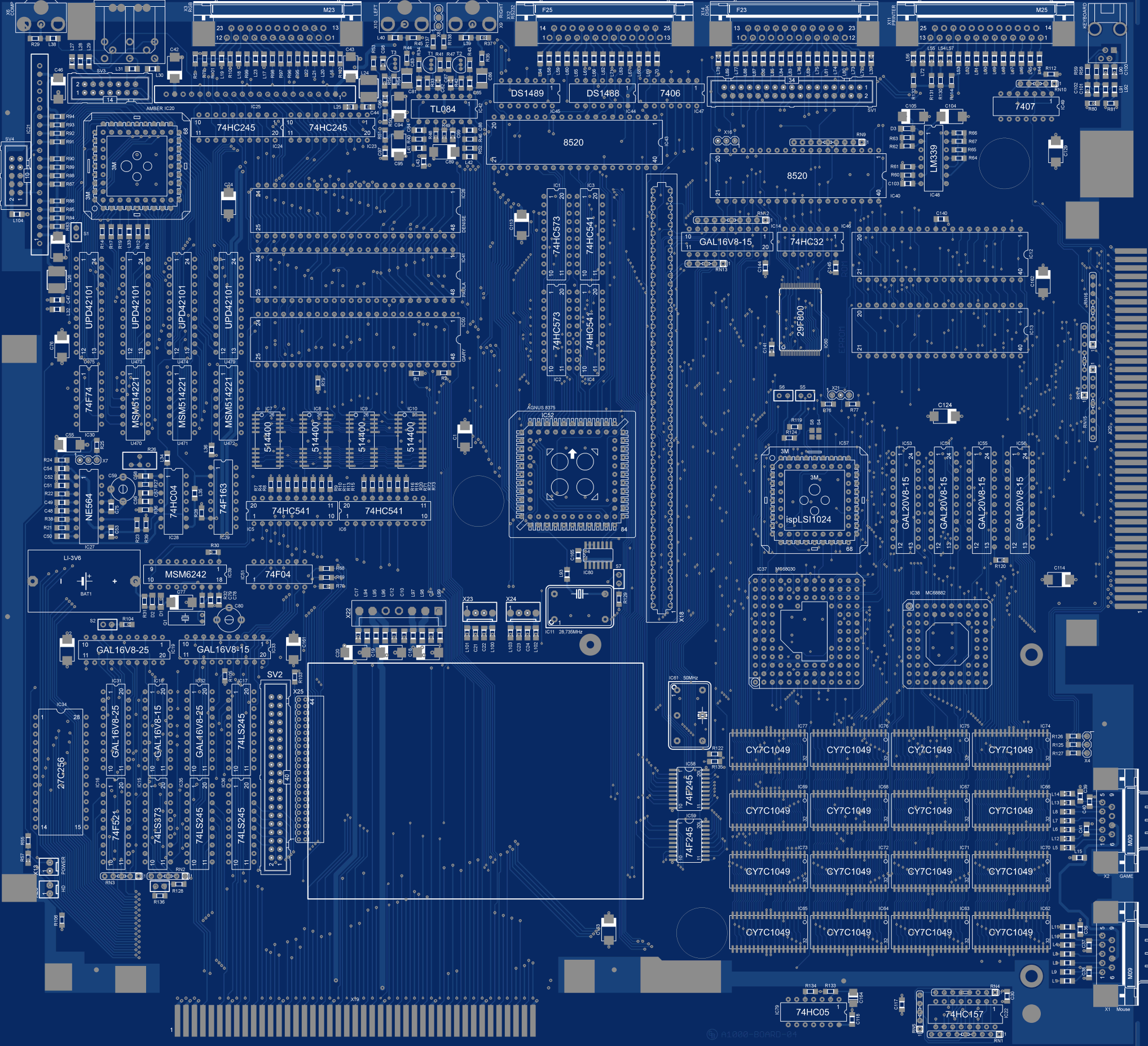
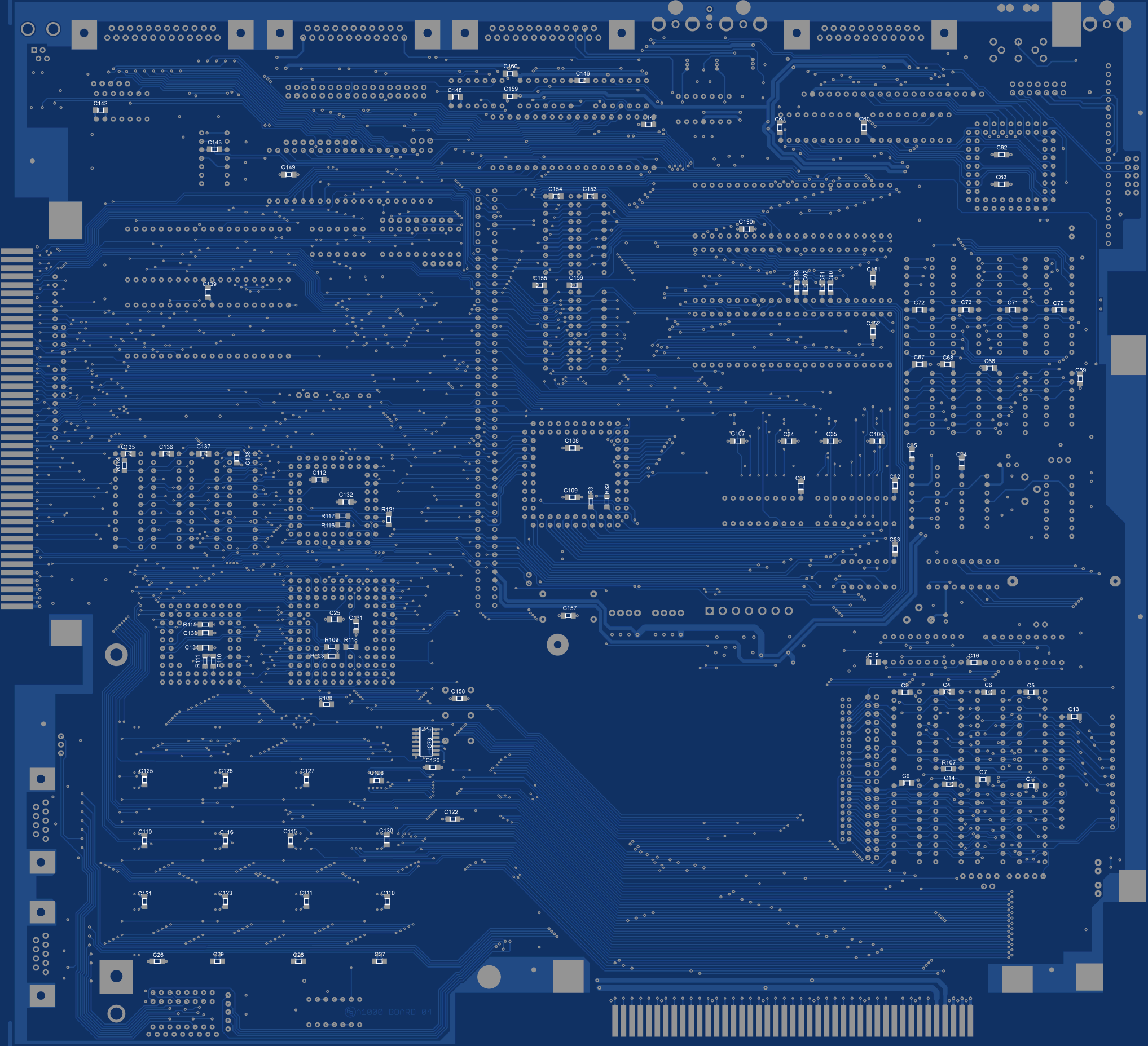
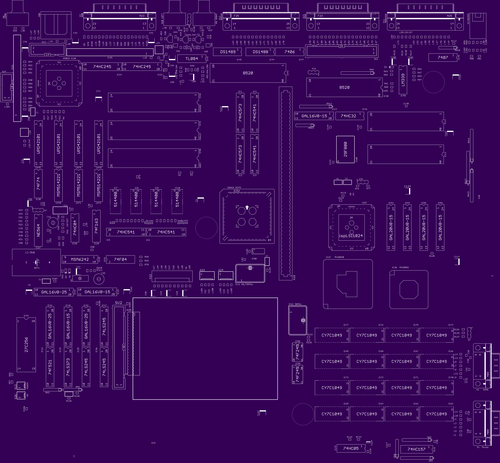
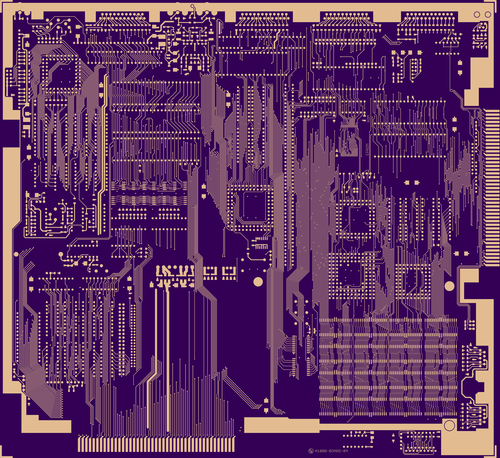
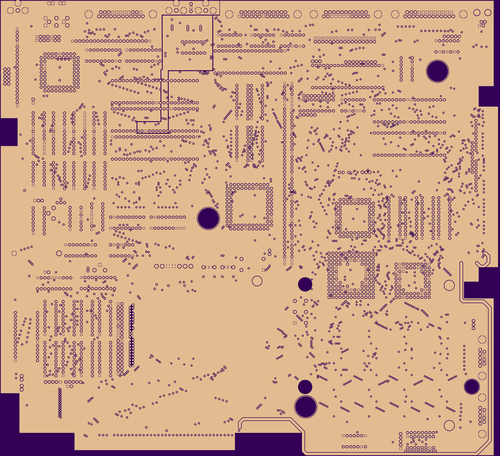
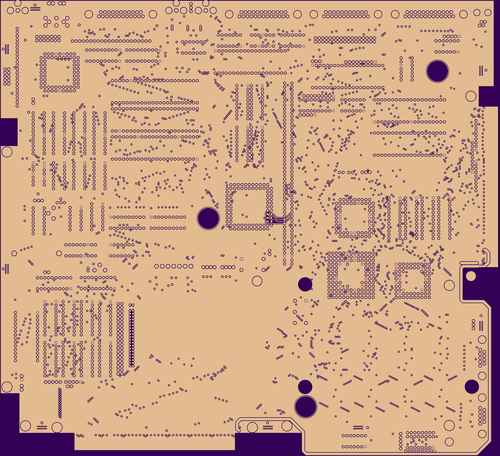

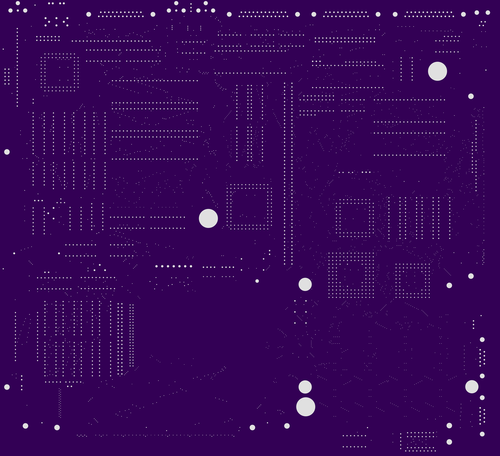
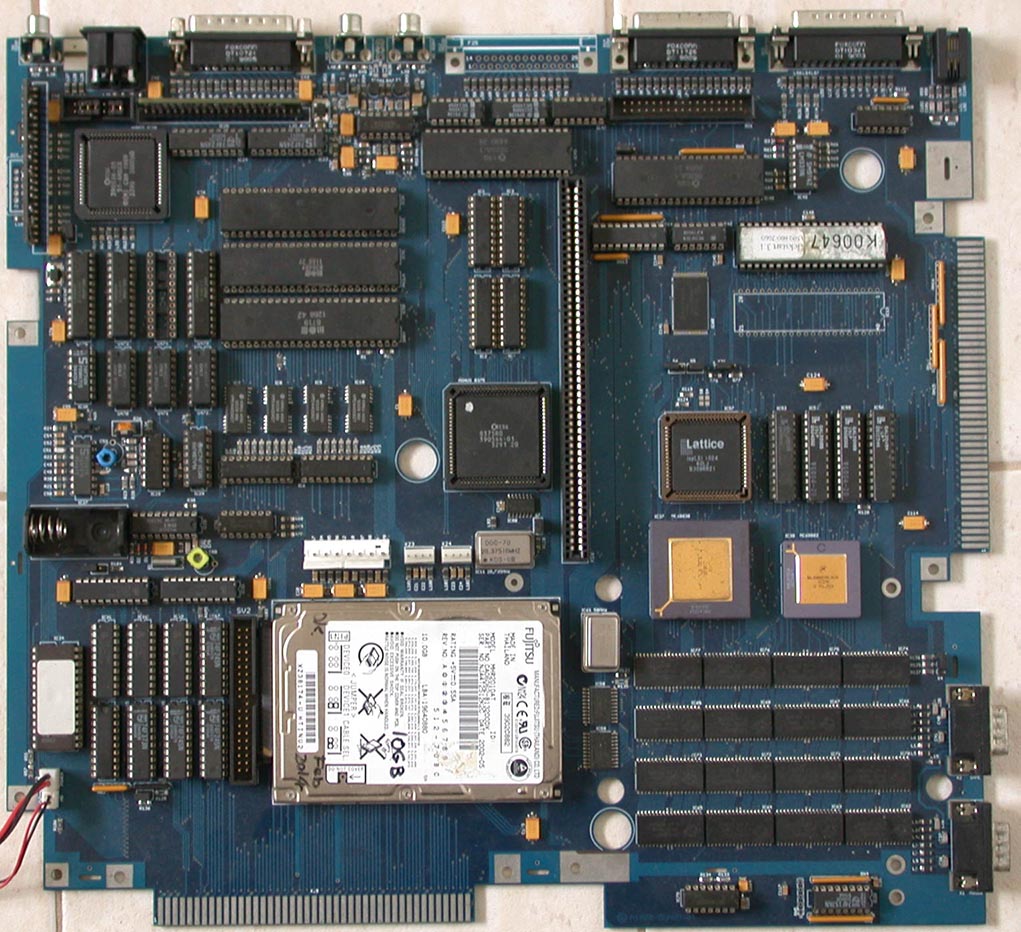
Size: 344.5mm x 314.0mm (4 Layer) |
|
| 4. |
GRAKA Rev 3.3 Picasso II-compatible Zorro-II Graphic Card (suits GBA1000 but will actually plug into any Amiga Zorro-II slot) by G.Braun
Build Level: SMD Master |
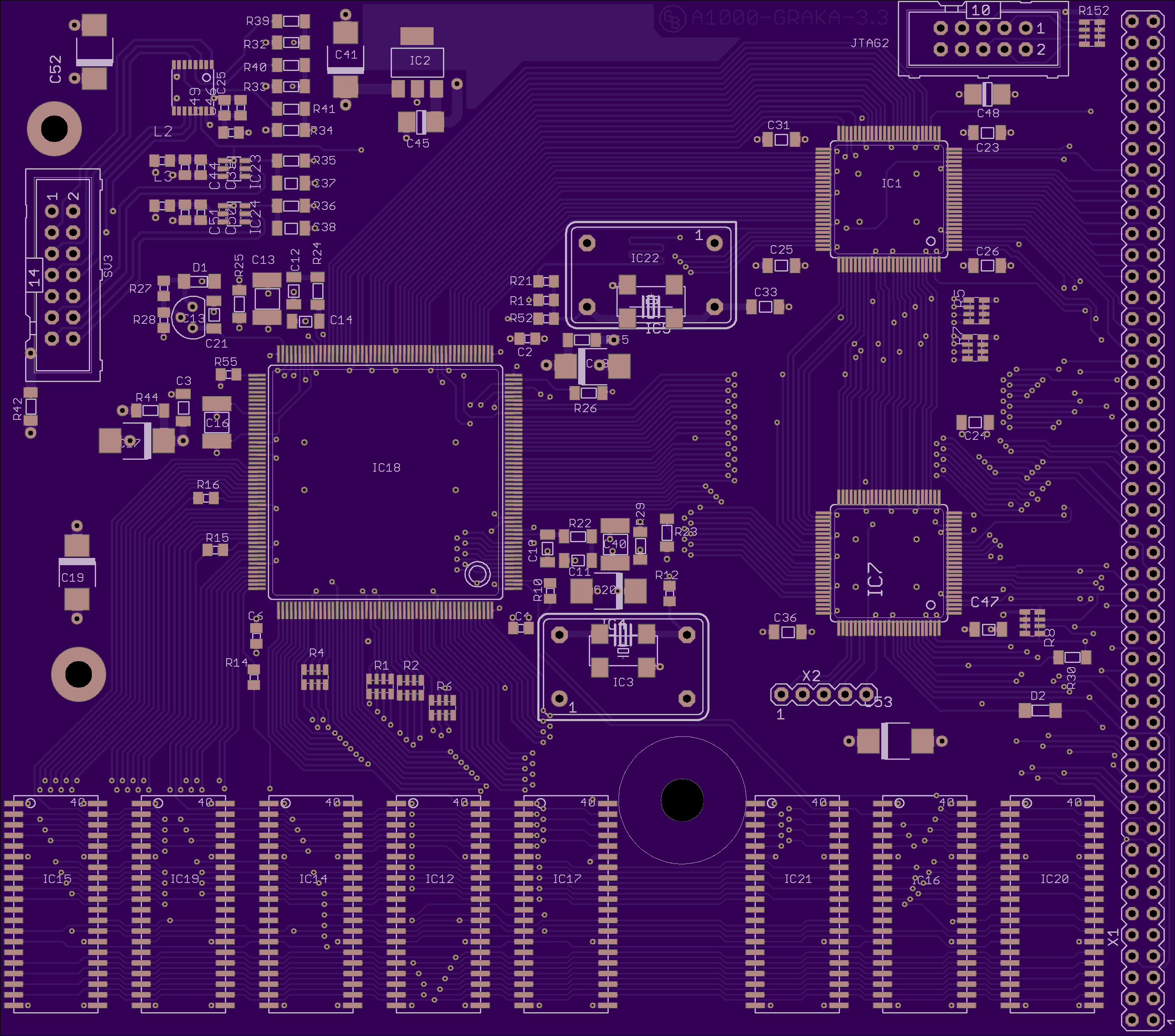
Size: 140.4mm x 123.8mm (4 Layer) |
|
| 5. |
TK-02 MC68060 Turbo Card by G.Braun (suits GBA1000)
Build Level: SMD Master |
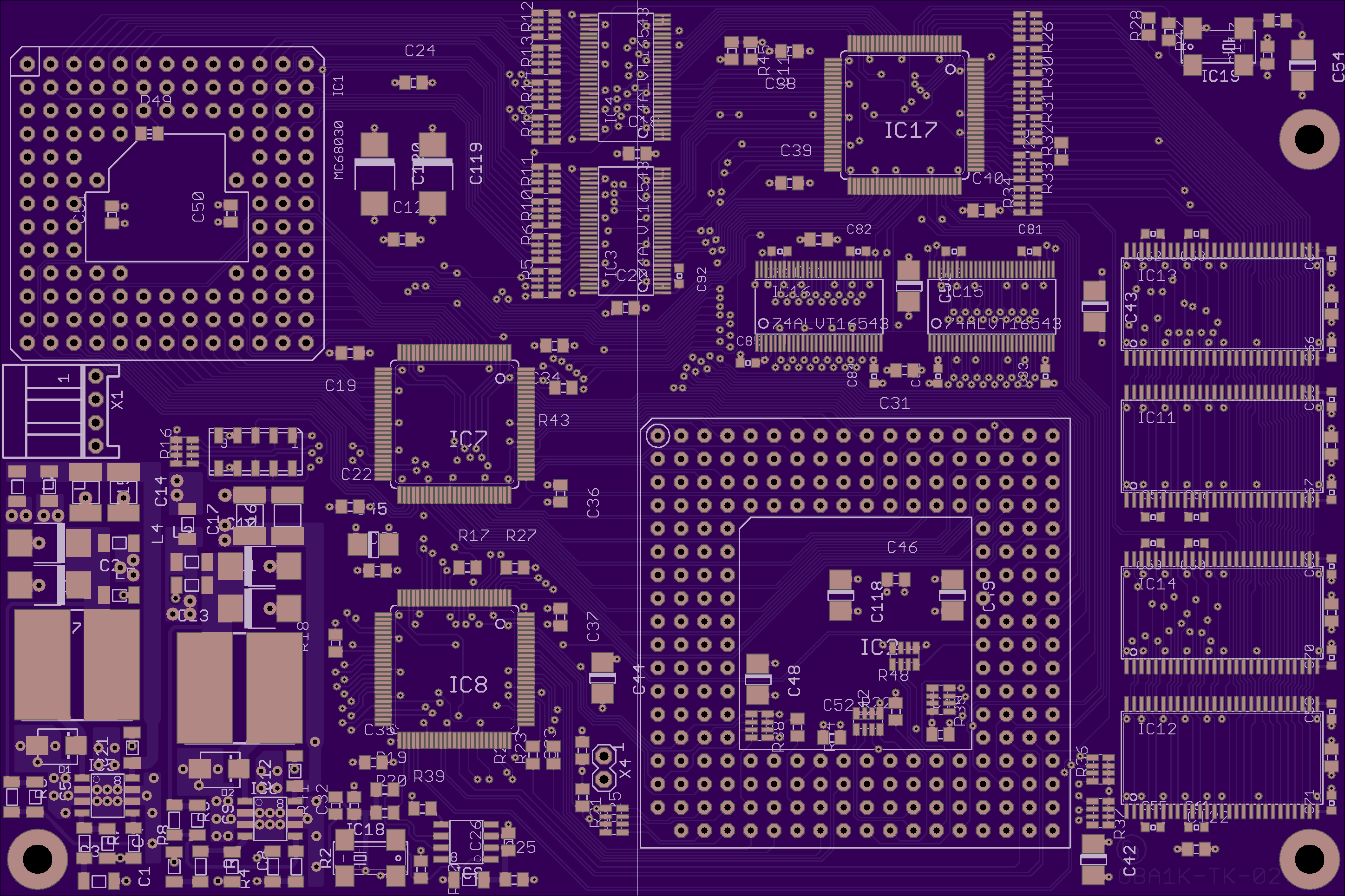
Size: 147.0mm x 98.0mm (4 Layer) |
|
| 9. |
C64 Lumafix
Used to reduce the vertical stripes produced by the C64 video chip. This actually isn't that useful and really does nothing. There are some good ways to get a better picture on the C64 but this isn't one of them ;-)
Designed by e5frog
Build Level: Intermediate |
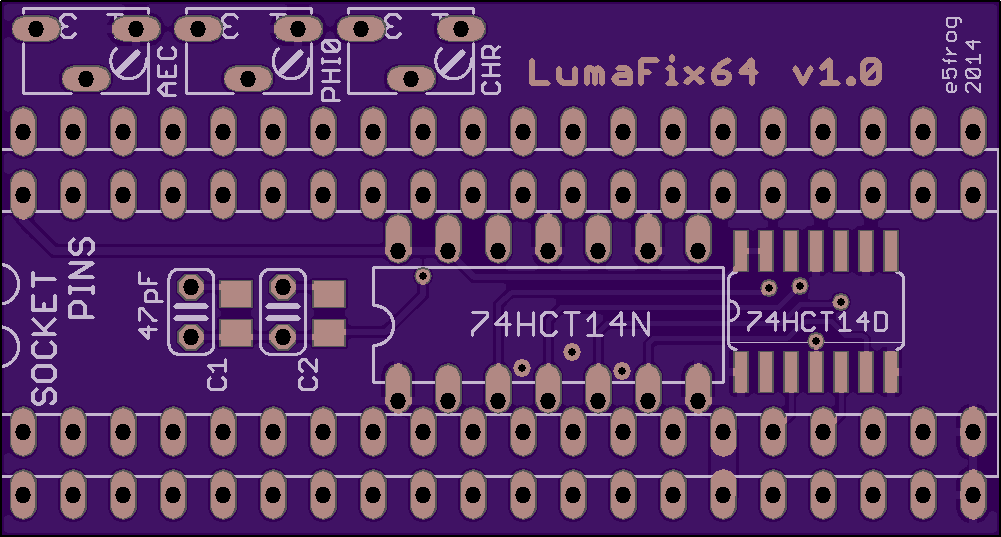
Size: 50.9mm x 27.3mm (2 Layer) |
|
| 10. |
C64 Switchless Quad Kernal Adapter
Allows C64 to switch between 4 kernal images using the RESTORE key. An Easy Flash 3 cart
does that and offers a lot more and is a better option IMO.
Designed by bwack
Build Level: Beginner |
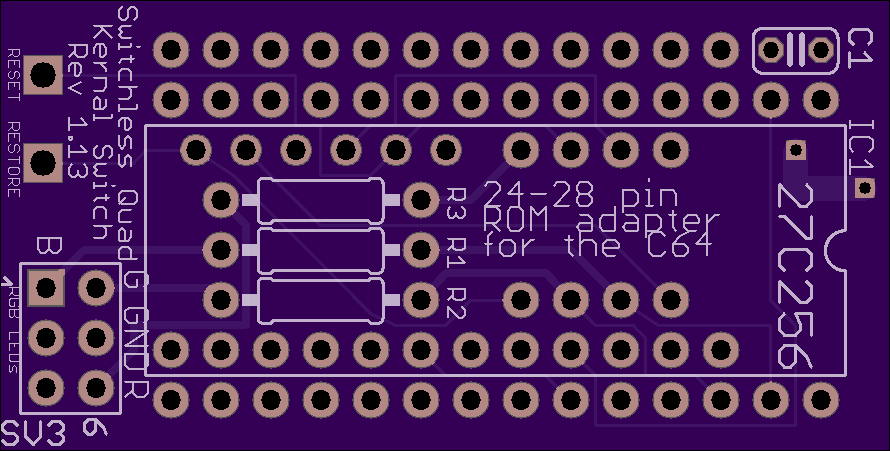
Size: 45.2mm x 22.9mm (2 Layer) |
|
| 13. |
Easy Flash 3 C64 cartridge
Designed by 'skoe' (2012)
Build Level: Advanced to SMD Master |

Size: 83.6mm x 62.0mm (2 Layer) |
|
| 22. |
Amiga 500/1000/2000 14MHz 68000 + 4MB RAM + IDE
A friend had an A1000 with a SupraDrive 4X4 which died and couldn't be fixed even after replacing every chip so this really nice board replaced it. I never had much luck with the 14MHz operation but it's great for adding 4MB RAM and an IDE HDD to an aging A1000. The original design didn't really fit in an A1000 so I have modified it to fit and made some other changes to fix some issues. RAM and IDE are not autoconfig. Requires boot disk to load drivers to enable the RAM and IDE. Original design by Matthias Heinrichs
Build Level: Intermediate (no programming required, only soldering)
Note: This is obsoleted by item 23 below. |
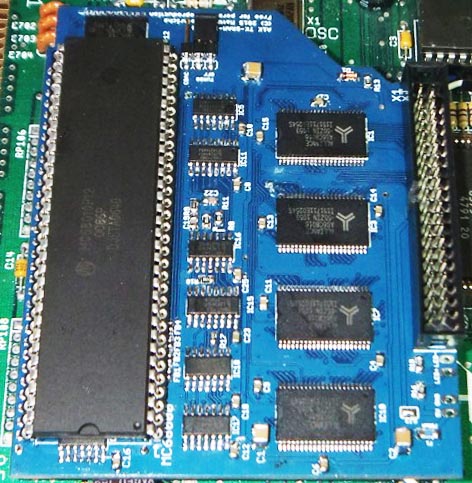
Size: 83mm x 100mm (2 Layer) |
|
| 23. |
Amiga 500/1000/2000/CDTV 68000 + 8MB RAM + Autoboot IDE
Similar to the above but with 8MB auto-config RAM and autoboot IDE. Originally designed for the CDTV by Matthias Heinrichs, but it works just fine in A1000, A500 and A2000 as well.
Build Level: Advanced (Many SMD parts, JTAG programming etc) |
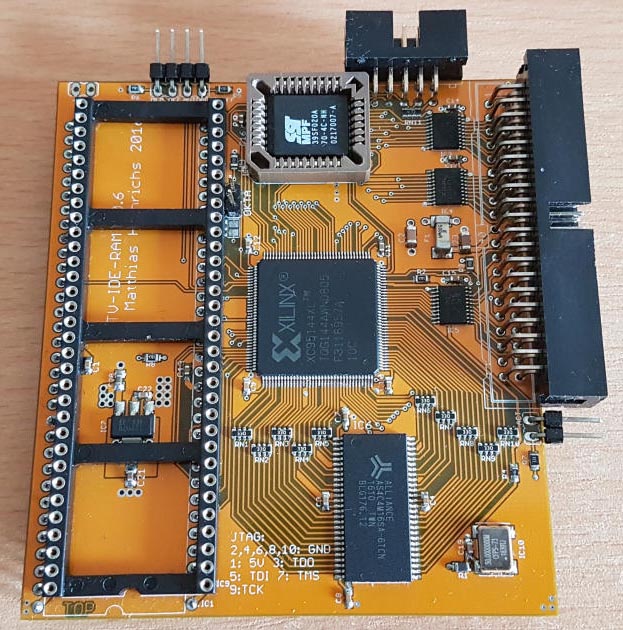


Size: 80mm x 90mm (2 Layer) |
|
| 24. |
Amiga 500/2000 68020 + 16MB RAM + Autoboot IDE
A more advanced version of the above with 25MHz 68020 + 16MB RAM and autoboot IDE. Original design by Matthias Heinrichs
Build Level: Advanced (All SMD parts, JTAG programming etc) |
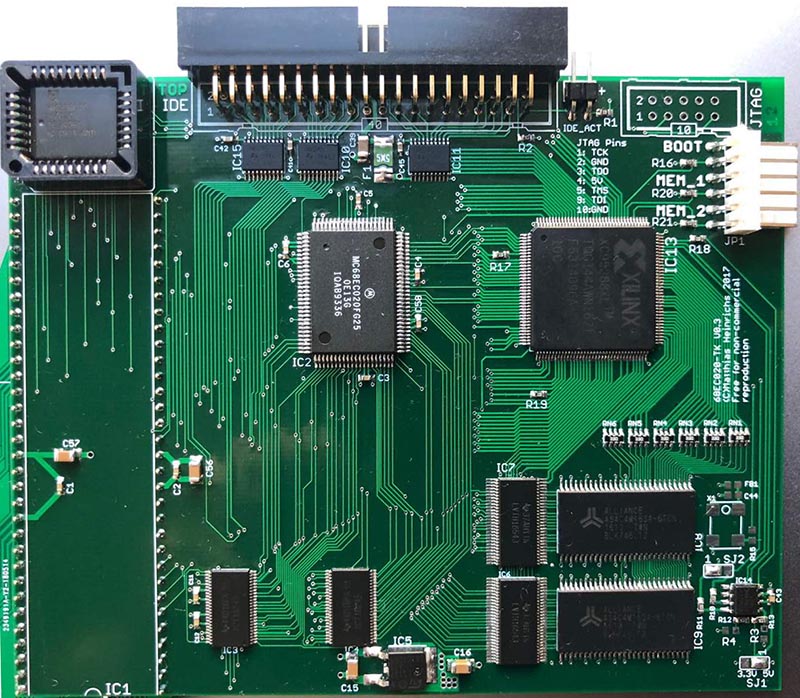
Size: 100mm x 125mm (2 Layer) |
|
| 25. |
Amiga A3640/3660 68040/68060 Accelerator
68040/60 Accelerator for Amiga 3000 & Amiga 4000
Build Level: SMD Master |

Size: 206mm x 98mm (4 Layer)
Stock Level: 10 |
|
| |
More things I'm going to be adding eventually (no order, no time-frame)..... |
|
|
| |
EasyFlash3+SD2IEC-OLED
This is an EasyFlash 3 cart with an added SD2IEC Dual AVR + OLED display but in full SMD.
This is heavily re-designed and is a very advanced project. Currently Work-In-Progress at Rev 1.1
Build Level: SMD Master / PCB Pick'n'Place Machine |
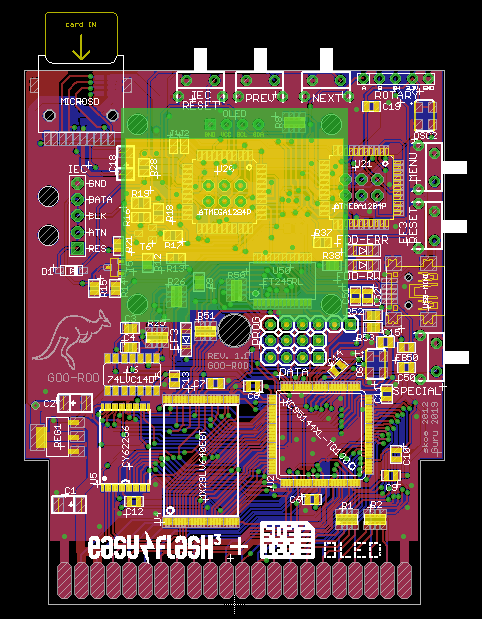
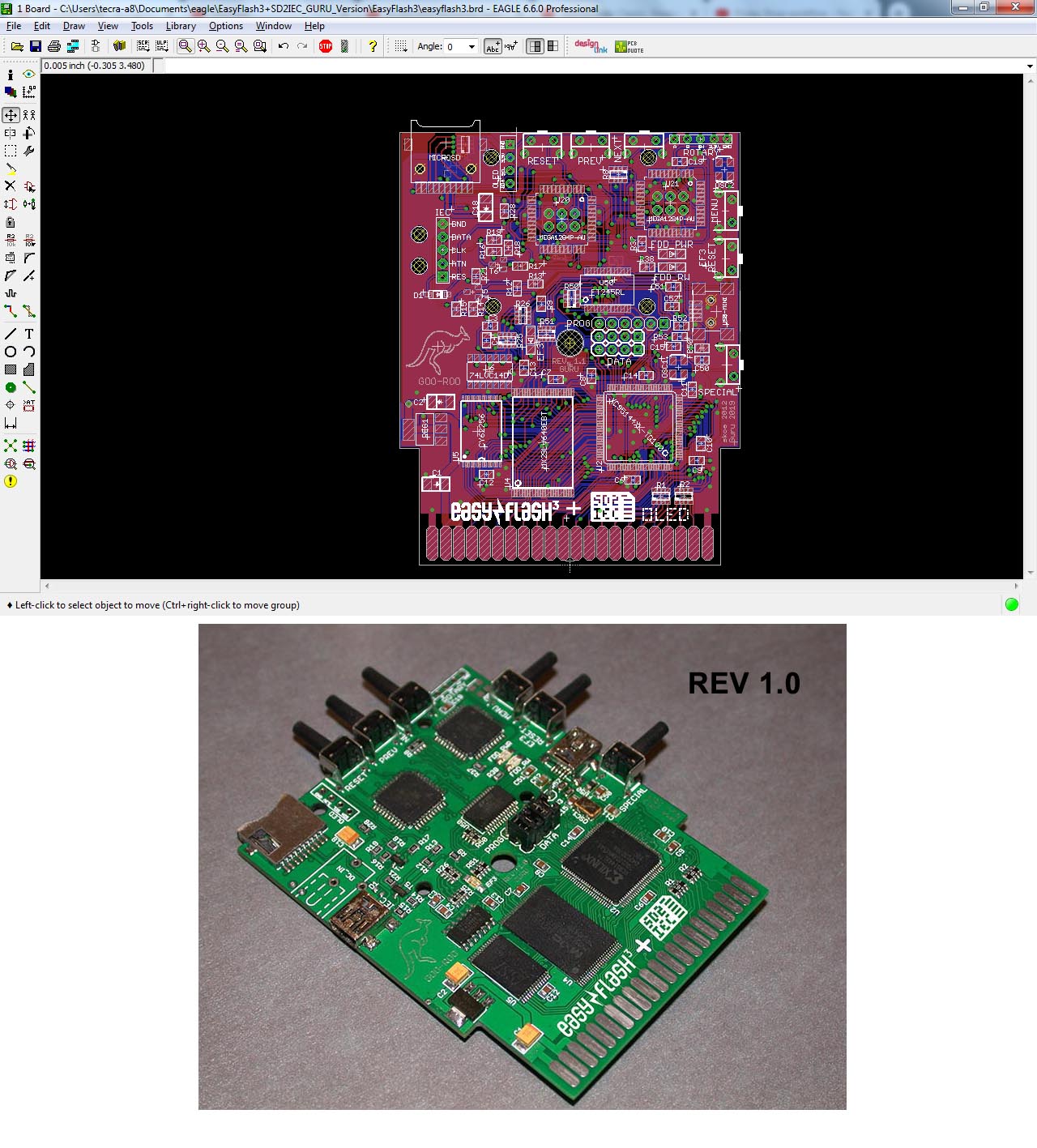
|
| |
Commodore 64 PSU (9VAC, 5VDC @ 3A)
This is a PCB that drops into the standard original Commodore 64 angled-brick PSU that was very common in 240V PAL regions like Australia. It uses the original transformer and case. It has built in over-volt, over-current and thermal protection.
This is custom designed by me. Currently Work-In-Progress at Rev 1.2 (note rev 1.0 is shown in the pic)
Build Level: Intermediate |
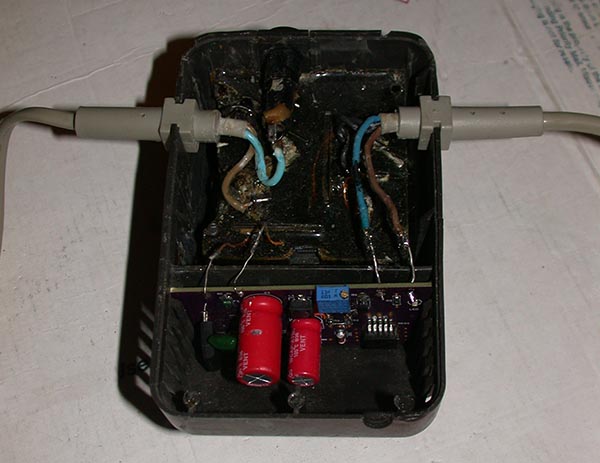
|
| |
Amiga 500 VIDIOT Hybrid
Replaces the Commodore 390229-03 VIDIOT custom IC used on A500, A2000, A3000 etc.
Build Level: Intermediate |

Size: xxmm x xxmm (2 Layer) |
| |
Amiga 500/2000 Kickstart Switcher #1
This can take 2 standard Kickstart chips and you can switch between them using a 6-second hold of CTRL-A-A. This one is a reversed copy of the 'Wilcom ROM Switcher' which I own. Note sure when it was originally made but probably late 80's.
Build Level: Intermediate |

Size: xxmm x xxmm (2 Layer) |
| |
Amiga 500/2000 Kickstart Switcher #2
Similar functions to the above, but using on-board flash ROM for the kickstarts and converted to full SMD by me.
Build Level: Advanced |

Size: xxmm x xxmm (2 Layer) |
| |
Amiga 1000 Kickstart Upgrade
Replaces the silly 64k boot-ROM in the A1000 with a proper Kickstart ROM, even up to KS3.1.4
Build Level: Advanced |

Size: xxmm x xxmm (2 Layer) |
| |
Fast Load Cart for C64 #2
Same as the above but using full SMD parts.
Build Level: Advanced |

Size: xxmm x xxmm (2 Layer) |
| |
A1200 LED board
I got hold of a non-working A1200 in poor condition and brought it back to life but it was missing the LED board, so I made one.
Build Level: Beginner |

Size: xxmm x xxmm (2 Layer) |
| |
A600 LED board
Not sure if I'll do this, it's just an idea, same purpose as the A1200 board above but for A600.
Build Level: Beginner |

Size: xxmm x xxmm (2 Layer) |
| |
5101 RAM adapter for Stern MPU-200
Same as the above but to suit Stern MPU-200 boards that use 2x 5101 RAMs. This single board plugs into 2 sockets to replace both 5101 chips.
Build Level: Intermediate |

Size: xxmm x xxmm (2 Layer) |
| |
Commodore PET Repair Module
This is a dead project from 2012 called the PetVet. It plugs into the 6502 socket on a faulty PET motherboard and makes it work again. Basically this replaces the CPU+RAM+ROMs on the motherboard. I have converted most of the parts to use SMD and made it much smaller than the original.... there's a theme here if you didn't notice.... smaller and cheaper ;-)
Build Level: Intermediate |

Size: xxmm x xxmm (2 Layer) |
| |
Atari 2600 Joystick PCB Replacement
Replaces the crappy and cheapo tact dome switches board inside the Atari 2600 joystick with a version using modern parts
Build Level: Intermediate |

Size: xxmm x xxmm (1 Layer) |
| |
C64 Datasette Replacement
This is a Guru re-work of the Tapuino, but made smaller so it costs less. The original design is way too big and 50% of the PCB is unused, resulting in a product that costs way more than it should. Back in the early 80's no one liked the datasette, and now 30 years later it's just a novelty item. People who are curious can now make one for very little cost. The add-on Arduino only costs $2 extra from China.
Build Level: Advanced |

Size: xxmm x xxmm (2 Layer) |
| |
more coming soon..... |
|
|



